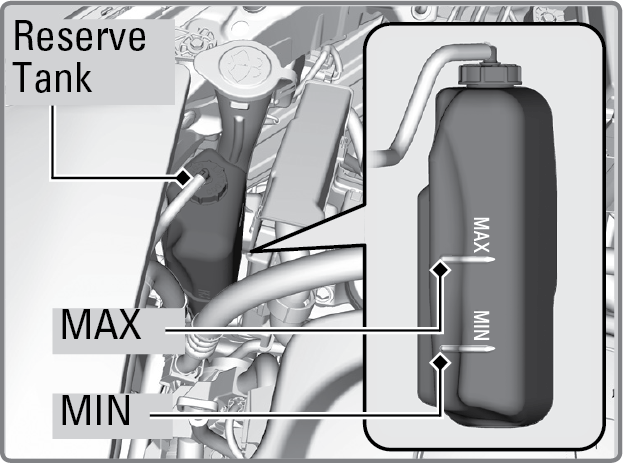Signs your engine is overheating:
- The temperature gauge needle is at the H mark
- The engine suddenly loses power
- Steam or spray comes out from under the hood
- The message Engine Temperature Too Hot appears on the display*1.
First thing to do:
- Immediately park the vehicle in a safe place. Turn off all accessories and turn on the hazard warning lights.

- If no steam or spray is present: Keep the vehicle running and open the
hood (See
Under the Hood).
If steam or spray is present: Turn off the engine and wait until it subsides. Then, open the hood (See Under the Hood).
- Check that the cooling fan is operating and stop the engine once the temperature gauge needle goes down. If the cooling fan is not operating, immediately stop the engine.
- Once the engine has cooled down, inspect the coolant level and check the cooling system components for leaks. If the coolant level in the reserve tank is low, add coolant until it reaches the MAX mark. If there is no coolant in the reserve tank, make sure the radiator is cool, then cover the radiator cap with a heavy cloth and open the cap. If necessary, add coolant up to the base of the filler neck, and put the cap back on.
Once the engine has cooled sufficiently, restart it and check the temperature gauge. If the temperature needle has gone down, resume driving. If it has not gone down, contact a dealer for repairs.
Do not open the hoodif steam is coming out.
Always let the engine and radiator cool down before removing the radiator cap.